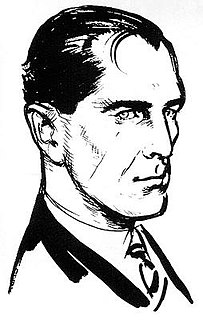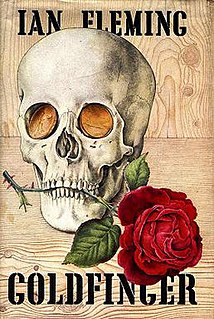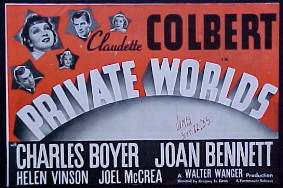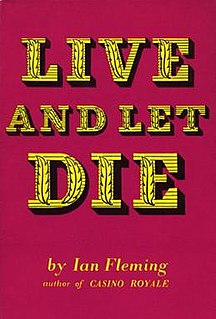
The James Bond series focuses on a fictional British Secret Service agent created in 1953 by writer Ian Fleming, who featured him in twelve novels and two short-story collections. Since Fleming's death in 1964, eight other authors have written authorised Bond novels or novelisations: Kingsley Amis, Christopher Wood, John Gardner, Raymond Benson, Sebastian Faulks, Jeffery Deaver, William Boyd, and Anthony Horowitz. The latest novel is Forever and a Day by Anthony Horowitz, published in May 2018. Additionally Charlie Higson wrote a series on a young James Bond, and Kate Westbrook wrote three novels based on the diaries of a recurring series character, Moneypenny.

Dr. No is the sixth novel by the English author Ian Fleming to feature his British Secret Service agent James Bond. Fleming wrote the novel in early 1957 at his Goldeneye estate in Jamaica. It was first published in the United Kingdom by Jonathan Cape on 31 March 1958. The novel centres on Bond's investigation into the disappearance in Jamaica of two fellow MI6 operatives. He establishes that they had been investigating Doctor No, a Chinese operator of a guano mine on the fictional Caribbean island of Crab Key. Bond travels to the island and meets Honeychile Rider and later Doctor No.
Leonard Cyril Deighton is a British author. His publications have included books on cookery and military history, but he is best known for his spy novels.

Ian Lancaster Fleming was a British writer who is best known for his postwar James Bond series of spy novels. Fleming came from a wealthy family connected to the merchant bank Robert Fleming & Co., and his father was the Member of Parliament (MP) for Henley from 1910 until his death on the Western Front in 1917. Educated at Eton, Sandhurst, and, briefly, the universities of Munich and Geneva, Fleming moved through several jobs before he started writing.

From Russia, with Love is the fifth novel by the English author Ian Fleming to feature his fictional British Secret Service agent James Bond. Fleming wrote the story in early 1956 at his Goldeneye estate in Jamaica; at the time he thought it might be his final Bond book. The novel was first published in the United Kingdom by Jonathan Cape on 8 April 1957.

Ernst Stavro Blofeld is a fictional character and villain from the James Bond series of novels and films, created by Ian Fleming. A criminal mastermind with aspirations of world domination, he is the archenemy of the British Secret Service agent James Bond. Blofeld is head of the global criminal organisation SPECTRE and is commonly referred to by the codename Number 1 within this organisation. The character was originally written by Fleming as a physically massive and powerfully built man, standing around 6' 3" and weighing 20 st, who had become flabby with a huge belly.

Goldfinger is the seventh novel in Ian Fleming's James Bond series. Written in January and February 1958, it was first published in the UK by Jonathan Cape on 23 March 1959. The story centres on the investigation by the British Secret Service operative James Bond into the gold smuggling activities of Auric Goldfinger, who is also suspected by MI6 of being connected to SMERSH, the Soviet counter-intelligence organisation. As well as establishing the background to the smuggling operation, Bond uncovers a much larger plot: Goldfinger plans to steal the gold reserves of the United States from Fort Knox.

Moonraker is the third novel by the British author Ian Fleming to feature his fictional British Secret Service agent James Bond. It was published by Jonathan Cape on 5 April 1955 and featured a cover design conceived by Fleming. The plot is derived from a Fleming screenplay that was too short for a full novel, so he added the passage of the bridge game between Bond and the industrialist Hugo Drax. In the latter half of the novel, Bond is seconded to Drax's staff as the businessman builds the Moonraker, a prototype missile designed to defend England. Unknown to Bond, Drax is German, an ex-Nazi now working for the Soviets; his plan is to build the rocket, arm it with a nuclear warhead, and fire it at London. Uniquely for a Bond novel, Moonraker is set entirely in Britain, which raised comments from some readers, complaining about the lack of exotic locations.

Private Worlds is a 1935 dramatic film which tells the story of the staff and patients at a mental hospital and the chief of the hospital, who has problems dealing with a female psychiatrist. The film stars Claudette Colbert, Charles Boyer, Joel McCrea, Joan Bennett, and Helen Vinson.

You Only Live Twice is the eleventh novel in Ian Fleming's James Bond series of stories. It was first published by Jonathan Cape in the United Kingdom on 26 March 1964 and sold out quickly. It was the last Fleming novel published in his lifetime. It is the concluding chapter in what is known as the "Blofeld Trilogy" after Thunderball and On Her Majesty's Secret Service.

The Spy Who Loved Me is the ninth novel in Ian Fleming's James Bond series, first published by Jonathan Cape on 16 April 1962. It is the shortest and most sexually explicit of Fleming's novels, as well as a clear departure from previous Bond novels in that the story is told in the first person by a young Canadian woman, Vivienne Michel. Bond himself does not appear until two-thirds of the way through the book. Fleming wrote a prologue to the novel giving Michel credit as a co-author.
Per Fine Ounce is the title of an unpublished novel by Geoffrey Jenkins featuring Ian Fleming's James Bond. It was completed c.1966 and is considered a "lost" novel by fans of James Bond because it was actually commissioned by Glidrose Productions, the official publishers of James Bond. It was rejected for publication, however, missing the opportunity to become the first continuation James Bond novel. The Adventures of James Bond Junior 003½, a novel written by the pseudonymous R. D. Mascott, was later published in 1967 featuring James Bond's nephew; Colonel Sun written by Kingsley Amis under the pseudonym Robert Markham was published in 1968 as the first adult continuation novel following Ian Fleming's The Man with the Golden Gun (1965).

James Bond, The Spy Who Loved Me is the official novelization of the 1977 Eon James Bond filmThe Spy Who Loved Me, which was itself inspired by the 1962 novel of the same title by Ian Fleming.

Casino Royale is the first novel by the British author Ian Fleming. Published in 1953, it is the first James Bond book, and it paved the way for a further eleven novels and two short story collections by Fleming, followed by numerous continuation Bond novels by other authors.

Diamonds Are Forever is the fourth novel by the British author Ian Fleming to feature his fictional British Secret Service agent James Bond. Fleming wrote the story at his Goldeneye estate in Jamaica, inspired by a Sunday Times article on diamond smuggling. The book was first published by Jonathan Cape in the United Kingdom on 26 March 1956.

Live and Let Die is the second novel in Ian Fleming's James Bond series of stories. Set in London, the United States and Jamaica, it was first published in the UK by Jonathan Cape on 5 April 1954. Fleming wrote the novel at his Goldeneye estate in Jamaica before his first book, Casino Royale, was published; much of the background came from Fleming's travel in the US and knowledge of Jamaica.
Phyllis Forbes Dennis was a British novelist and short story writer.

Devil May Care is a James Bond continuation novel written by Sebastian Faulks. It was published in the UK by Penguin Books on 28 May 2008, the 100th anniversary of the birth of Ian Fleming, the creator of Bond. The story centres on Bond's investigation into Dr Julius Gorner, a megalomaniac chemist with a deep-seated hatred of England.

Commander James Bond is a character created by the British journalist and novelist Ian Fleming in 1953. He is the protagonist of the James Bond series of novels, films, comics and video games. Fleming wrote twelve Bond novels and two short story collections. His final two books—The Man with the Golden Gun (1965) and Octopussy and The Living Daylights (1966)—were published posthumously.















